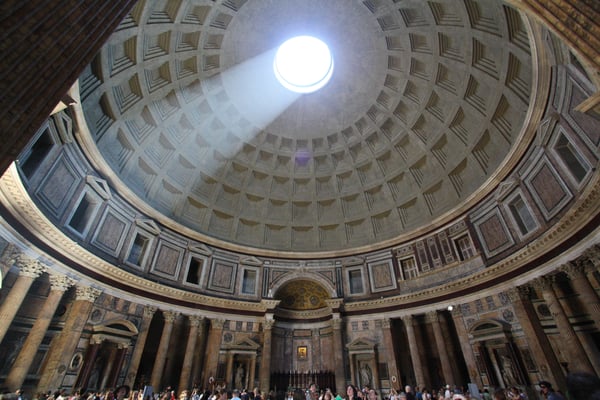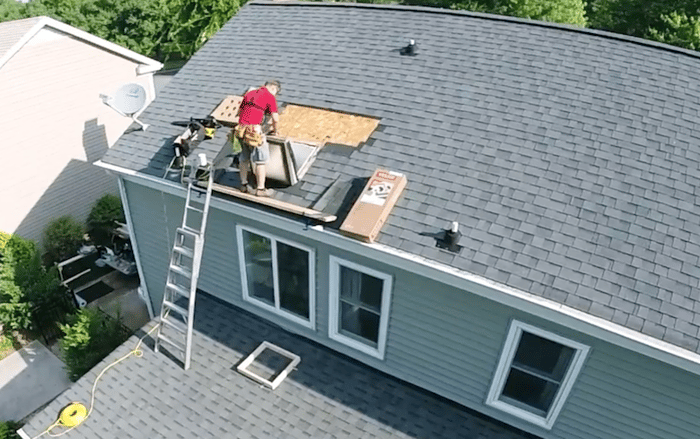
Skylights are fun, aren't they? But where the heck did they originate? Who was the first person to put a window in the ceiling? And when did they start opening to let fresh air in?
To answer these questions, we'll have to travel to Europe...
Ancient Rome
Daylight used to light up an interior space is not a new concept. It's not even an old concept; it's an ancient one!
For examples of ancient skylights, we mostly see round, open ones used in Ancient Roman architecture, most notably the oculus of the Pantheon.

With glassmaking in its infancy, it wasn't considered for architectural purposes until about 1000 AD. So, the very first skylights were actually open-air skylights! An architectural marvel, the dome structure they were positioned on top would provide a bit of insulation against the elements while the skylight provided natural light and fresh air.
17th Century France
While Romans were the first to begin using glass in architecture, it could be argued that the French perfected it. Before the Industrial Revolution (which we'll get to in a moment), France had the leading technology in architectural glass.
One of the earliest displays of skylighting technology is the Halle aux blés in Paris. Built between 1763-1767, the natural overhead lighting allowed for illumination while the entire interior wall could be decorated. Putting the light source on the ceiling also eliminated light obstruction from other buildings.

While the Halle aux blés skylight is more like those found in the Ancient Roman structures, one of the earliest forms of today's modern glass skylights can also be found in France. The enormous skylight that runs the length of the Galerie des Batailles in the Palace of Versailles was added in 1830.
.jpeg?width=600&name=Versailles+skylights+(2).jpeg)
The Industrial Revolution
Told ya we'd get here! And with the Industrial Revolution came big changes for the use of glass structurally.
With machine power, glass in sheets up to 6 feet by 9 feet could be fully machine polished for a clearer finish. And when sheet metal came into production, the ability to provide glazing sealed from the weather was greatly improved. So, skylights became more functional while providing even more light to more areas. As such, we started seeing skylights in smaller buildings and even residential homes!
1940's Denmark
And then there was VELUX!
In 1941 in the not-so-small town of Copenhagen, Villum Kann-Rasmussen, inspired by his father's belief in fresh air and sunshine for a healthy soul in a healthy body, set out to create a skylight that would never leak. With WWII rations came creativity and improvisation, which resulted in a skylight with wood framing, zinc cladding, and condensation drains. In other words, a skylight that would let daylight and fresh air in, but keep rain out.
He continued to expand on his designs, resulting in the best line of skylights and roof windows available today.

VELUX Skylight Systems
Reimagine Your Home With Natural Light and Fresh Air

SKYLIGHT INNOVATIONS
The Different Parts of Your VELUX Solar Powered "Fresh Air" Skylight
Ever wondered what all the parts on your VELUX Solar Powered "Fresh Air" Skylight do? Well, we're he...
Keep Reading
SKYLIGHT INNOVATIONS
The Different Parts of Your VELUX Manual "Fresh Air" Skylight
Ever wondered what all the parts on your VELUX Manual "Fresh Air" Skylight do? Well, we're here to t...
Keep Reading
HOME TOURS
It's Time to Replace that Old Bubble Skylight
Have an old plastic skylight taking up space on your roof? Replace it with a VELUX Skylight!
Keep Reading